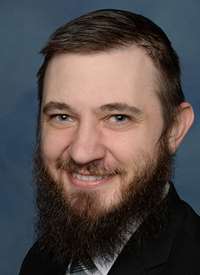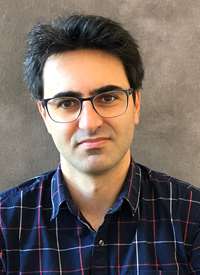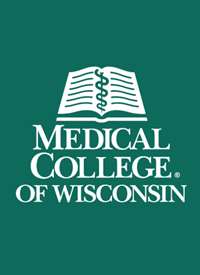Alper K, Raghavan M, Isenhart R, Howard B, Doyle W, John R, et al. Localizing epileptogenic regions in partial epilepsy using three-dimensional statistical parametric maps of background EEG source spectra. Neuroimage 2008; 39(3): 1257-65.
Binder JR, Sabsevitz DS, Swanson SJ, Hammeke TA, Raghavan M, Mueller WM. Use of preoperative functional MRI to predict verbal memory decline after temporal lobe epilepsy surgery. Epilepsia 2008; 49: 1377-94.
Binder JR, Swanson SJ, Hammeke TA, Morris GL, Mueller WM, Fischer M, et al. Determination of language dominance using functional MRI: A comparison with the Wada test. Neurology 1996; 46: 978-84.
Binder JR, Tong J-Q, Pillay SB, Conant LL, Humphries CJ, Raghavan M, et al. Temporal lobe regions essential for preserved picture naming after left temporal epilepsy surgery. Epilepsia 2020; 61: 1939–48.
Chen W-L, Wagner J, Heugel N, Sugar J, Yu-Wen Lee, 2, , Conant L, et al. Functional near-infrared spectroscopy and its clinical application in the field of neuroscience: Advances and future directions. Frontiers in Neuroscience 2020; 14: 724.
Cook CJ, Hwang G, Mathis J, Nair VA, Allen L, Almane DN, et al. Effective connectivity within the default mode network in left temporal lobe epilepsy: Findings from the Epilepsy Connectome Project. Brain connectivity 2019; 9(2): 174-83.
Elverman KH, Resch ZJ, Quasney EE, Sabsevitz DS, Binder JR, Swanson SJ. Temporal lobe epilepsy is associated with distinct cognitive phenotypes. Epilepsy and Behavior 2019; 96: 61-8.
Hart JJ, Rao SM, Nuwer M. Clinical functional magnetic resonance imaging. Cognitive and Behavioral Neurology 2007; 20: 141-4.
Havlik E, Conant L, Murphy HE, Mau KA, Janecek JK, Raghavan M, et al. Memory outcome after left anterior temporal lobectomy in patients with and without hippocampal sclerosis. June 2020 Meeting of the American Academy of Clinical Neuropsychology. Washington DC; 2020.
Hermann B, Conant LL, Cook CJ, Hwang G, Garcia-Ramos C, Dabbs K, et al. Cognitive phenotypes of temporal lobe epilepsy: Findings from the Epilepsy Connectome Project. NeuroImage: Clinical 2020; in press.
Hermann B, Seidenberg M, Lee EJ, Chan F, Rutecki P. Cognitive phenotypes in temporal lobe epilepsy. J Int Neuropsychol Soc 2007; 13(1): 12-20.
Hwang G, Dabbs K, Conant LL, Nair VA, Mathis J, Nencka A, et al. Cognitive slowing and its underlying neurobiology in temporal lobe epilepsy. Cortex 2019a; 117: 41-52.
Hwang G, Nair VA, Mathis J, Cook CJ, Mohanty R, Zhao G, et al. Using low-frequency oscillations to detect temporal lobe epilepsy with machine learning. Brain connectivity 2019b; 9(2): 184-93.
Ibarra N, Murphy H, Janecek JK, Umfleet L, Binder JR, Raghavan M, et al. Predictors of quality of life after anterior temporal lobectomy. International Neuropsychological Society; 2021.
Janecek JK, Swanson SJ, Sabsevitz DS, Hammeke TA, Raghavan M, Binder JR. Naming outcome prediction in patients with discordant Wada and fMRI language lateralization. Epilepsy Behav 2013a; 27: 399-403.
Janecek JK, Swanson SJ, Sabsevitz DS, Hammeke TA, Raghavan M, Rozman ME, et al. Language lateralization by fMRI and Wada testing in 229 patients with epilepsy: Rates and predictors of discordance. Epilepsia 2013b; 54(2): 314-22.
Janecek JK, Winstanley FS, Sabsevitz DS, Raghavan M, Mueller W, Binder JR, et al. Naming outcome after left or right temporal lobectomy in patients with bilateral language representation by Wada testing. Epilepsy and Behavior 2013c; 28: 95-8.
Jones-Gotman M, Smith ML, Risse GL, Westerveld M, Swanson SJ, Baxendale S, et al. The contribution of neuropsychology to diagnostic assessment in epilepsy. Epilepsy and Behavior 2010; 18: 3-12.
Murphy H, Mau K, Janecek J, Raghavan M, Carlson C, Anderson C, et al. Changes in personality after anterior temporal lobectomy (ATL). 2020 International Neuropsychological Society. Denver, CO; 2020.
Quasney EE, Elverman KH, Sabsevitz D, Binder JR, Umfleet LG, Raghavan M, et al. Wada language lateralization index and Wada memory asymmetry scores as predictors of verbal memory decline after left temporal lobectomy. 46th Annual Meeting of the International Neuropsychological Society. Washington, D.C.; 2018.
Raghavan M, Li Z, Carlson C, Anderson CT, Stout J, Sabsevitz DS, et al. MEG language lateralization in partial epilepsy using dSPM of auditory event-related fields. Epilepsy and Behavior 2017; 73: 247-55.
Rivera-Bonet CN, Hermann B, Cook CJ, Hwang G, Dabbs K, Nair VA, et al. Neuroanatomical correlates of personality traits in temporal lobe epilepsy: Findings from the Epilepsy Connectome Project. Epilepsy and Behavior 2019; 98: 220-7.
Ruff IM, Swanson SJ, Hammeke TA, Sabsevitz DS, Mueller WM, Morris GL. Predictors of naming decline after dominant temporal lobectomy: Age at onset of epilepsy and age of word acquisition. Epilepsy and Behavior 2007; 10: 272-7.
Sabsevitz DS, Swanson SJ, Hammeke TA, Spanaki MV, Possing ET, Morris GL, et al. Use of preoperative functional neuroimaging to predict language deficits from epilepsy surgery. Neurology 2003; 60: 1788-92.
Sabsevitz DS, Swanson SJ, Morris GL, Mueller WM, Seidenberg M. Memory outcome after left anterior temporal lobectomy in patients with expected and reversed Wada memory asymmetry scores. Epilepsia 2001; 42: 1408-15.
Springer JA, Binder JR, Hammeke TA, Swanson SJ, Frost JA, Bellgowan PSF, et al. Language dominance in neurologically normal and epilepsy subjects: a functional MRI study. Brain 1999; 122: 2033-45.
Stewart CC, Swanson SJ, Sabsevitz DS, Rozman ME, Janecek JK, Binder JR. Predictors of language lateralization in temporal lobe epilepsy. Neuropsychologia 2014; 60: 93-102.
Swanson SJ, Conant LL, Humphries CJ, LeDoux M, Raghavan M, Mueller WM, et al. Changes in description naming for common and proper nouns after left anterior temporal lobectomy. Epilepsy and Behavior 2020; 106: in press.
Szaflarski JP, Gloss D, Binder JR, Gaillard WD, Golby AJ, Holland SK, et al. Practice guideline summary: Use of fMRI in the presurgical evaluation of patients with epilepsy. Report of the Guideline Development, Dissemination, and Implementation Subcommittee of the American Academy of Neurology. Neurology 2017; 88(4): 395-402.
Umfleet LG, Janecek JK, Quasney E, Sabsevitz DS, Ryan JJ, Binder JR, et al. Sensitivity and specificity of memory and naming tests for identifying left temporal-lobe epilepsy. Applied Neuropsychology: Adult 2015; 22: 189-96.
Youssofzadeh V, Stout J, Ustine C, Gross WL, Conant LL, Humphries CJ, et al. Mapping language from MEG beta power modulations during auditory and visual naming. Neuroimage 2020; 220: 117090.

























